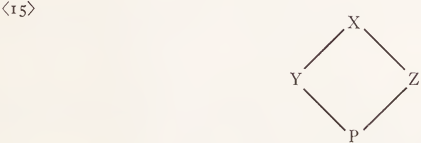

Grammar


Tenses


Present

Present Simple

Present Continuous

Present Perfect

Present Perfect Continuous


Past

Past Simple

Past Continuous

Past Perfect

Past Perfect Continuous


Future

Future Simple

Future Continuous

Future Perfect

Future Perfect Continuous


Parts Of Speech


Nouns

Countable and uncountable nouns

Verbal nouns

Singular and Plural nouns

Proper nouns

Nouns gender

Nouns definition

Concrete nouns

Abstract nouns

Common nouns

Collective nouns

Definition Of Nouns

Animate and Inanimate nouns

Nouns


Verbs

Stative and dynamic verbs

Finite and nonfinite verbs

To be verbs

Transitive and intransitive verbs

Auxiliary verbs

Modal verbs

Regular and irregular verbs

Action verbs

Verbs


Adverbs

Relative adverbs

Interrogative adverbs

Adverbs of time

Adverbs of place

Adverbs of reason

Adverbs of quantity

Adverbs of manner

Adverbs of frequency

Adverbs of affirmation

Adverbs


Adjectives

Quantitative adjective

Proper adjective

Possessive adjective

Numeral adjective

Interrogative adjective

Distributive adjective

Descriptive adjective

Demonstrative adjective


Pronouns

Subject pronoun

Relative pronoun

Reflexive pronoun

Reciprocal pronoun

Possessive pronoun

Personal pronoun

Interrogative pronoun

Indefinite pronoun

Emphatic pronoun

Distributive pronoun

Demonstrative pronoun

Pronouns


Pre Position


Preposition by function

Time preposition

Reason preposition

Possession preposition

Place preposition

Phrases preposition

Origin preposition

Measure preposition

Direction preposition

Contrast preposition

Agent preposition


Preposition by construction

Simple preposition

Phrase preposition

Double preposition

Compound preposition

prepositions


Conjunctions

Subordinating conjunction

Correlative conjunction

Coordinating conjunction

Conjunctive adverbs

conjunctions


Interjections

Express calling interjection

Phrases

Sentences


Grammar Rules

Passive and Active

Preference

Requests and offers

wishes

Be used to

Some and any

Could have done

Describing people

Giving advices

Possession

Comparative and superlative

Giving Reason

Making Suggestions

Apologizing

Forming questions

Since and for

Directions

Obligation

Adverbials

invitation

Articles

Imaginary condition

Zero conditional

First conditional

Second conditional

Third conditional

Reported speech

Demonstratives

Determiners


Linguistics

Phonetics

Phonology

Linguistics fields

Syntax

Morphology

Semantics

pragmatics

History

Writing

Grammar

Phonetics and Phonology

Semiotics


Reading Comprehension

Elementary

Intermediate

Advanced


Teaching Methods

Teaching Strategies

Assessment
Hierarchies are non-convergent
المؤلف:
THOMAS G. BEVER and PETER S. ROSENBAUM
المصدر:
Semantics AN INTERDISCIPLINARY READER IN PHILOSOPHY, LINGUISTICS AND PSYCHOLOGY
الجزء والصفحة:
593-33
2024-08-29
1562
Hierarchies are non-convergent
The examples we have discussed do not involve convergence within one hierarchy. That is, there are no instances of hierarchies like (15) in which the hierarchy branches at X and converges at P.

There are several reasons why convergent hierarchies are not tolerable. First, there are many instances in which a single lexical item is dominated by different words, e.g. (16):

If convergences were an acceptable part of the formalism, it would be possible to simplify (16) to (17):

But this would transfer to ‘ hands ’ all the selectional features of both ‘ humans ’ and ‘clocks’, many of which are mutually incompatible (notably ‘ ± animate’). Furthermore, if the senses of ‘hands’ are not distinguished we could not account for the oddity of sentences like:
(171) The clock’s face and hands are large but mine aren’t.
Maintaining distinct senses of lexical items in distinct lexical hierarchies is motivated independently of the consequences for convergent hierarchies. There are also motivations against convergent hierarchies within the same ‘lexical tree’. Consider the subsection of figure (5) in (18a):

‘Arm’ could dominate ‘joint’ directly on the Have dimension as in (18b) (as well (18) (b)

as via ‘limb’) since there is a sentence ‘an arm has a joint’. However, this would transfer to ‘joint’ all the properties pertaining to ‘arm’. This would in turn transfer all the features of ‘arm’ to ‘knee’, which is clearly incorrect.
The requirement that there are no convergences in the lexical hierarchy has the result that there are many distinct matrices in the lexicon which utilize the Have and Be hierarchies.1 There are many problems about these matrices which require further investigation. We have merely outlined the essential motivations for the hierarchies as lexical structures, and shown that convergent hierarchies cannot be included.
1 In fact, it might appear that an incorrect result follows from this restriction just in case a particular property or object is shared by many different words. For example, consider the word ‘electron’. Convergent hierarchies would allow this word to appear only once in the lexicon:

The restriction against convergent hierarchies would appear to force such a word to have multiple representation:

However, ‘electron’ does not appear many times, once under each object, rather only once under the word ‘object’ itself. Any other word that is an object automatically acquires the property of having electrons, by the assimilation rules discussed above.
 الاكثر قراءة في Semantics
الاكثر قراءة في Semantics
 اخر الاخبار
اخر الاخبار
اخبار العتبة العباسية المقدسة

الآخبار الصحية















 قسم الشؤون الفكرية يصدر كتاباً يوثق تاريخ السدانة في العتبة العباسية المقدسة
قسم الشؤون الفكرية يصدر كتاباً يوثق تاريخ السدانة في العتبة العباسية المقدسة "المهمة".. إصدار قصصي يوثّق القصص الفائزة في مسابقة فتوى الدفاع المقدسة للقصة القصيرة
"المهمة".. إصدار قصصي يوثّق القصص الفائزة في مسابقة فتوى الدفاع المقدسة للقصة القصيرة (نوافذ).. إصدار أدبي يوثق القصص الفائزة في مسابقة الإمام العسكري (عليه السلام)
(نوافذ).. إصدار أدبي يوثق القصص الفائزة في مسابقة الإمام العسكري (عليه السلام)


















